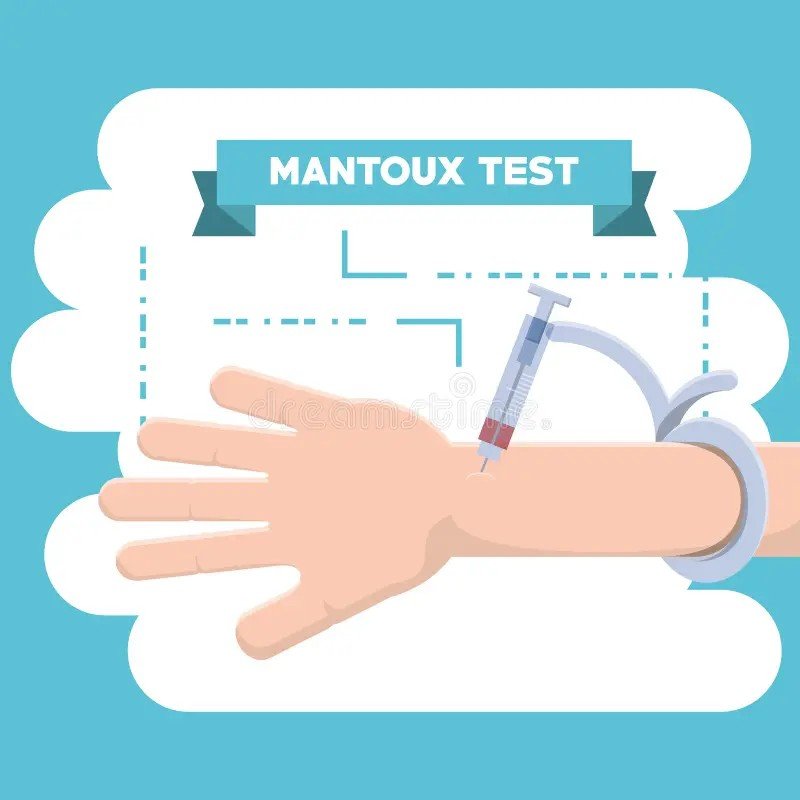- Home
-
Test Categories
- Diabetes
- Urinary
- Thyroid
- RTPCR
- Genetic
- Cancer
- Haematology
- Biochemistry
- Serology & Immunology
- Clinical Pathology
- Cytology
- Microbiology
- Endocrinology
- Histopathology
- MOLECULAR DIAGNOSTICS
- Pregnancy(Biochemistry)
- Liver
- Prostate
- Fertility
- Gastro
- Autoimmune Disorders
- Heart
- Kidney
- Vitamins
- Tuberculosis (TB)
- Anemia
- Fever
- Allergy
- Blood Tests Rare
- Profiles
- Packages
- About Us
- Why Choose Us
- Upload Prescription
- Corporate Wellness
- Contact Us

-
Overview
The Mantoux Test, also known as the Tuberculin Skin Test (TST), is used to determine if someone has been exposed to the bacteria that cause tuberculosis (TB). It involves an intradermal injection of a small amount of purified protein derivative (PPD) into the skin and is used primarily for screening rather than diagnosing active TB disease.
**Preparation:**
- **No Special Preparation Required:** You should inform your healthcare provider of any history of TB, recent travel to TB-endemic areas, or any previous TB testing or treatment.
**Procedure:**
1. **Injection:** A small amount of PPD is injected just beneath the skin, usually on the forearm.
2. **Reading the Test:** The injection site is examined 48-72 hours later by a healthcare provider to assess the reaction.
**Interpretation:**
- **Positive Reaction:** Indicates that the person has been exposed to TB bacteria at some point. This does not necessarily mean they have active TB disease. Further diagnostic tests, such as a chest X-ray or sputum test, may be required to determine if TB is active or latent.
- **Induration (swelling):** A raised, hard area at the injection site is measured in millimeters. The significance of the reaction can depend on factors like the person's risk of TB exposure and overall health.
- **Negative Reaction:** Suggests that the person has not been exposed to TB bacteria or has not developed a significant immune response. However, a negative result does not completely rule out TB, especially in individuals with weakened immune systems or those who have had recent TB exposure.
**Consultation:**
Discuss your results with your healthcare provider to determine if additional testing or follow-up is needed based on your overall health, risk factors, and any symptoms you may have.
All test groups and subgroup
-
Mantoux Test; Tuberculin Skin Test
